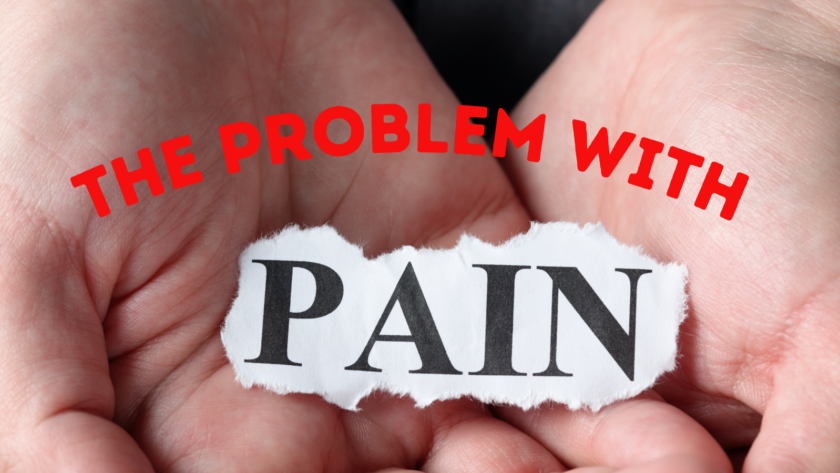Long before my son was diagnosed with Autism, we knew he struggled with sensory processing issues. Sensory Processing Disorder (SPD) affects many neurodivergent thinkers. Sometimes those sensory issues may be inconvenient or draw attention. This week I was reminded of why SPD can be scary. Like many SPD “sensory seekers”, my son does not process pain the way other people do.
“That Tickles!”
This weekend, my son went skating for the first time. I got a call from one of the adults in the group not long after they started skating. They said my son had fallen several times and hurt his wrist, but he didn’t seem to be in too much pain. He ended up staying for the next hour playing arcade games (since skating was obviously not his thing), and I took him to get his wrist checked after they got back.
The look of confusion on the nurse’s face was obvious. She began to move his wrist, and he began laughing.
“That tickles!” he laughed.
The nurse looked back at the X-ray and could see the broken bone. No wonder she was confused. I quickly pointed out that he has sensory processing issues. He doesn’t process pain the same way other kids do. When we saw the orthopedic doctor two days later it was more of the same. He only rated his pain at about a 3 or 4 and laughed when the doctor pressed on the broken bone. Thank goodness the X-rays showed the problem. Otherwise, no one would have taken him seriously.
It’s Scary
The inability to process pain can lead to some scary situations. For my son, it means he doesn’t always realize when the shower is too hot. He will walk out into an ice storm in his shorts. And, like this weekend, he doesn’t realize when he’s hurt.
Sure, we’ve found ways to protect him, like keeping the water heater thermostat turned down to control the temperature of the water. When he was younger, I would pick out his clothes for him on extreme weather days. Sometimes making him sit down for a while after hurting himself gave his brain time to process things and realize he was in pain. Often when he does cry from pain it’s because he’s physically bleeding. I suspect the blood is a visual cue that helps him recognize when he’s hurt.
As a parent, this is scary because I know how important it is to react to pain. God gave us a sense of pain to teach us our limits. Without recognizing when we’re in pain, we only hurt ourselves worse. When my son was a toddler, he touched a hot furnace, but because he didn’t immediately process the feeling of pain, he didn’t remove his finger until he had a significant burn. As he’s grown, he’s had ingrown toenails that he doesn’t seem to notice until they are so bad that the doctor has to cut them out.
The list of ways this affects my son goes on, and I know many parents who can add their own stories. As a parent, this is the scary side of SPD.
What Can You Do?
Note: The products linked in this section are ones I’ve used or are used by many parents, teachers, and occupational therapists. These are affiliated links, and I may receive some compensation at no cost to you. You can find more information in the Privacy Policy link at the bottom.
Dawn Sonnier is a local occupational therapist and has worked with sensory seekers in classrooms and in therapeutic settings. She and I combined our knowledge to offer a few ideas for parents and those living and working with those who have low registration or hyposensitivity as part of their SPD and aren’t always aware of pain.
- Prevent burns while bathing by adjusting the thermostat on the hot water heater. There are also waterproof thermometers for the bath that include safety alarms to let you or the person bathing know when the water is too hot. Some, like this one from Neculogy, are designed with babies in mind. Older kids and adults may prefer thermometers that attach to the faucet or pipe and use light to indicate unsafe temperatures.
- Some other hot objects are a little more challenging to avoid, but consistent strategies can help. For example, covering the stove with a silicone cover when not in use. If the stovetop is uncovered, that signals that it’s being used and may be hot. The silicone covering means it’s safe to touch. Also, keep oven mitts and potholders in sight when cooking. Out of sight means out of mind.
- We keep our toddlers away from sharp objects as much as possible. For some kids, this may need to continue well into their childhood. Not every child is ready to use non-safety scissors and knives in elementary school. Once a child or adult has the dexterity to use sharp objects like knives and scissors, careless accidents are pretty common. Using finger guards is becoming more common in the kitchen, and cut-resistant finger cots can be helpful when using scissors.
- Some people with hyposensitivity may not have a strong sense of smell. This becomes a problem if they don’t smell the smoke from a fire, so make sure the smoke detectors work and are loud enough to be heard. Smoke detectors with flashing lights may also help.
- Finally, help kids learn while they are still young to look for signs that they are hurt. Accidents happen. If your child falls off the trampoline or runs into something while riding their bike, make them stop and examine themselves for blood, swelling, broken bones, etc. Show them how to do that. Learning the importance of taking time for self-examination and giving the brain time to process the situation can often stop someone from hurting themselves worse.




